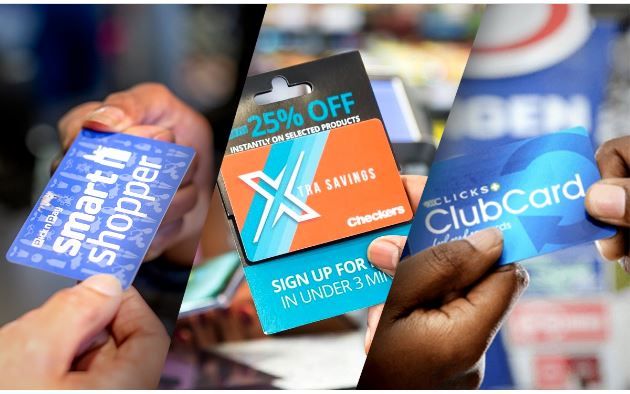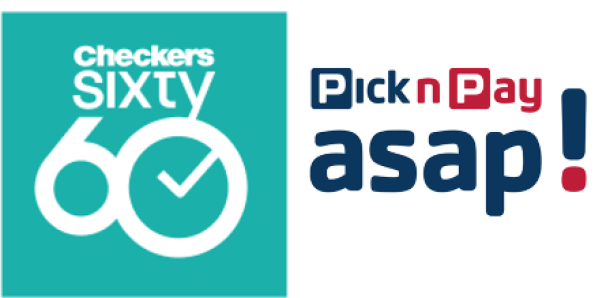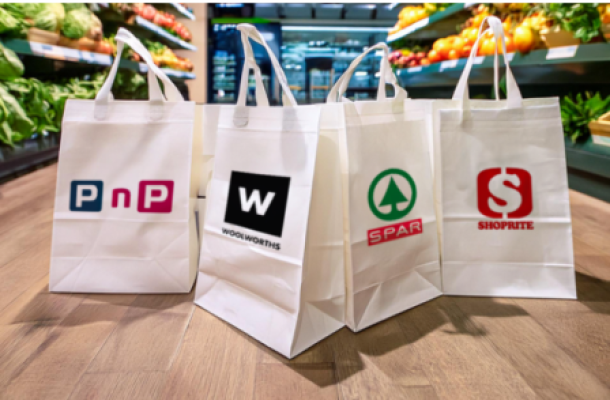
The most popular loyalty programmes in South Africa in 2022
Truth and BrandMapp have published the latest South African Loyalty Landscape whitepaper, showing which loyalty programmes in the country are the most popular.
The report provides a detailed breakdown of loyalty programme demographics in the country, including the profiles of people who are most likely to subscribe to them, how the programmes influence behaviour, and how consumers go about selecting the programmes to join.
Among the more notable findings, the report showed a massive uptake of reward schemes in the country, with consumers now subscribed to 9.2 programmes on average – up from 3.6 in 2014.
“In 2022, South Africans are active members of 9.2 loyalty programmes on average. This particular statistic has changed significantly over time. Whilst we see that the number of South Africans using loyalty programmes has only grown by approximately 9% since 2015, the actual number of programme usage has grown by 256% since 2014,” the authors said.
Loyalty programme use has been relatively stable in South Africa over the last seven years, with 67% of the population using reward schemes in 2015 and 73% in 2022.
The broad profile of programme users:
- Female customers tend to use loyalty programmes more than men;
- Older customers use loyalty programmes more than younger customers;
- Wealthier customers tend to use loyalty programmes more than lower-income customers.
More granular assessments show that the difference between men and women is not that big in terms of usage (73% vs 74%, respectively) – but the difference comes in which programmes are used.
Women are more likely than men to use reward programmes tied to shopping and sp[ecific products – while men are more likely than women to use rewards to guide purchases for fuel, banking and travel.
Across genders and age groups, however, loyalty programmes are most likely to influence shopping behaviour, the researchers found, followed by specific products, fuel, banking, restaurants, travel and finally, insurance.
 https://businesstech.co.za/news/wp-content/uploads/2022/11/Loyalty-influence-300x92.png 300w, https://businesstech.co.za/news/wp-content/uploads/2022/11/Loyalty-influence-1024x314.png 1024w, https://businesstech.co.za/news/wp-content/uploads/2022/11/Loyalty-influence-768x235.png 768w" alt="" width="1054" height="323" class="aligncenter size-full wp-image-642037" style="height: auto; max-width: 100%; transition: all 0.3s ease-in-out 0s; clear: both; margin: 0px auto; display: block; backface-visibility: hidden;" loading="lazy" data-mce-src="https://businesstech.co.za/news/wp-content/uploads/2022/11/Loyalty-influence.png" data-mce-style="height: auto; max-width: 100%; transition: all 0.3s ease-in-out 0s; clear: both; margin: 0px auto; display: block; backface-visibility: hidden;" />
https://businesstech.co.za/news/wp-content/uploads/2022/11/Loyalty-influence-300x92.png 300w, https://businesstech.co.za/news/wp-content/uploads/2022/11/Loyalty-influence-1024x314.png 1024w, https://businesstech.co.za/news/wp-content/uploads/2022/11/Loyalty-influence-768x235.png 768w" alt="" width="1054" height="323" class="aligncenter size-full wp-image-642037" style="height: auto; max-width: 100%; transition: all 0.3s ease-in-out 0s; clear: both; margin: 0px auto; display: block; backface-visibility: hidden;" loading="lazy" data-mce-src="https://businesstech.co.za/news/wp-content/uploads/2022/11/Loyalty-influence.png" data-mce-style="height: auto; max-width: 100%; transition: all 0.3s ease-in-out 0s; clear: both; margin: 0px auto; display: block; backface-visibility: hidden;" />
The most popular reward schemes
This is also reflected in the ranking of the most popular reward schemes in the country.
The Clicks Clubcard emerged as the most used loyalty programme in the country, followed closely by Pick n Pay’s Smart Shopper and Checkers’ Xtra Savings.
Retailer loyalty programmes are by far the most used, with the biggest non-retail rewards scheme, FNB’s eBucks, ranking as the eighth largest overall.
 https://businesstech.co.za/news/wp-content/uploads/2022/11/Loyalty-programmes-2022-279x300.png 279w" alt="" width="705" height="758" class="aligncenter size-full wp-image-642035" style="height: auto; max-width: 100%; transition: all 0.3s ease-in-out 0s; clear: both; margin: 0px auto; display: block; backface-visibility: hidden;" loading="lazy" data-mce-src="https://businesstech.co.za/news/wp-content/uploads/2022/11/Loyalty-programmes-2022.png" data-mce-style="height: auto; max-width: 100%; transition: all 0.3s ease-in-out 0s; clear: both; margin: 0px auto; display: block; backface-visibility: hidden;" />
https://businesstech.co.za/news/wp-content/uploads/2022/11/Loyalty-programmes-2022-279x300.png 279w" alt="" width="705" height="758" class="aligncenter size-full wp-image-642035" style="height: auto; max-width: 100%; transition: all 0.3s ease-in-out 0s; clear: both; margin: 0px auto; display: block; backface-visibility: hidden;" loading="lazy" data-mce-src="https://businesstech.co.za/news/wp-content/uploads/2022/11/Loyalty-programmes-2022.png" data-mce-style="height: auto; max-width: 100%; transition: all 0.3s ease-in-out 0s; clear: both; margin: 0px auto; display: block; backface-visibility: hidden;" />
Among the so-called “mass market” – South Africans with household incomes of R10,000 and below per month – these are the most used loyalty programmes in the country:
 https://businesstech.co.za/news/wp-content/uploads/2022/11/Mass-market-loyalty-programmes-265x300.png 265w" alt="" width="702" height="794" class="aligncenter size-full wp-image-642039" style="height: auto; max-width: 100%; transition: all 0.3s ease-in-out 0s; clear: both; margin: 0px auto; display: block; backface-visibility: hidden;" loading="lazy" data-mce-src="https://businesstech.co.za/news/wp-content/uploads/2022/11/Mass-market-loyalty-programmes.png" data-mce-style="height: auto; max-width: 100%; transition: all 0.3s ease-in-out 0s; clear: both; margin: 0px auto; display: block; backface-visibility: hidden;" />
https://businesstech.co.za/news/wp-content/uploads/2022/11/Mass-market-loyalty-programmes-265x300.png 265w" alt="" width="702" height="794" class="aligncenter size-full wp-image-642039" style="height: auto; max-width: 100%; transition: all 0.3s ease-in-out 0s; clear: both; margin: 0px auto; display: block; backface-visibility: hidden;" loading="lazy" data-mce-src="https://businesstech.co.za/news/wp-content/uploads/2022/11/Mass-market-loyalty-programmes.png" data-mce-style="height: auto; max-width: 100%; transition: all 0.3s ease-in-out 0s; clear: both; margin: 0px auto; display: block; backface-visibility: hidden;" />
Why South Africans want loyalty programmes – and why they don’t
According to the report’s authors, loyalty in South Africa is driven by two main factors – instant reward and building up points for bigger rewards.
Other features of loyalty programmes – like time-limited spending windows, spending more to earn more and in-store offers – also influence increased activity on programmes, but instant rewards and building to bigger rewards are the key motivators.
“If we cross reference this group of loyalty users with how loyalty programmes influence their behaviour, we see that all behaviours are much more influenced than for other members. Enabling customers to both save points and be instantly rewarded significantly changes their behaviours across all indicators. They are also the most demanding loyalty customers in that they want all of the benefits from their loyalty programme,” the authors said.
In contrast to this, fuel rewards and using rewards programmes to climb “tiers” – key features of banking rewards programmes – prove to be significantly less popular and influential.
On the other side of the equation, the authors also engaged with customers who do not use or do not want to use loyalty programmes.
This group see little value in such schemes, noting that any decent rewards require spending at levels much higher than they typically would. Some, however, are simply not interested.
Among loyalty programme users, one of the biggest gripes listed as being off-putting for rewards are points that expire.
News Category
- International retailers
- On the move
- Awards and achievements
- Legislation
- Wine and liquor
- Africa
- Going green
- Supplier news
- Research tools
- Retailer trading results
- Supply chain
- Innovation and technology
- Economic factors
- Crime and security
- Store Openings
- Marketing and Promotions
- Social Responsibility
- Brand Press Office
Related Articles

Checkers Sixty60 wipes floor with Pick n Pay As...

Top tips for consumers to combat escalating ele...

Clear winner in South African retail battle

Drinks survey reveals Rooibos as a top choice a...


